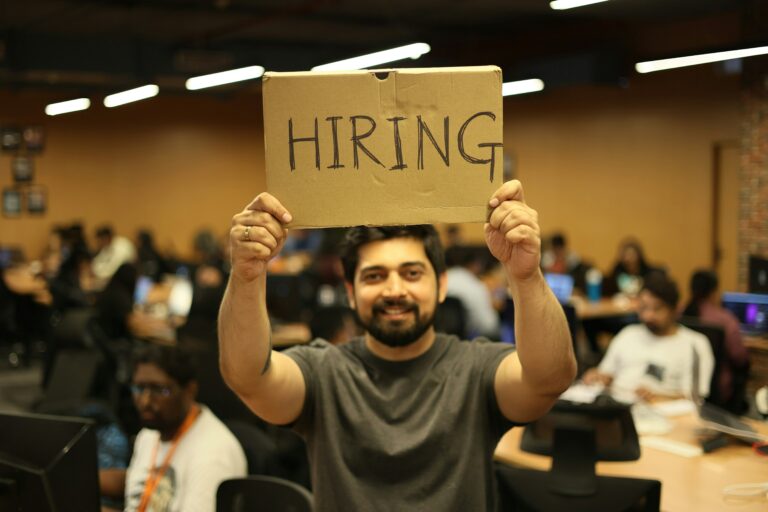Unconscious bias refers to the biases and prejudices individuals may have without being consciously aware of them. They are deeply ingrained stereotypes or attitudes that unconsciously affect our understanding, actions, and decisions. These biases can cloud judgment and significantly impact the hiring process, leading to a less diverse and inclusive workplace. It can lead to unfair treatment of candidates based on factors such as gender, race, age, and appearance. For example, a recruiter may unconsciously favor candidates who share similar backgrounds or characteristics to their own.
It is important to understand and recognize unconscious bias to create a more inclusive and diverse workplace. By acknowledging the existence of these biases, organizations can take steps to minimize their impact on the hiring process.
Identifying Common Types of Unconscious Bias in Hiring
In the context of the hiring process, these biases can manifest in various ways, such as favoring candidates who are like the hiring manager or unconsciously discriminating against certain demographics.
Some common types of biases include:
- Affinity Bias: Preferring candidates who share similar interests, backgrounds, or experiences.
- Confirmation Bias: Seeking information that confirms pre-existing beliefs about a candidate.
- Halo Effect: Allowing one positive trait to overshadow other potentially negative traits.
- Horns Effect: Letting one negative trait disproportionately affect the overall evaluation of a candidate.
- Stereotyping: Making assumptions about a candidate based on their gender, race, age, or other characteristics.
By understanding these common types of unconscious bias, organizations can be more vigilant in identifying and addressing them in the hiring process.

Strategies to Minimize Bias and Enhance Diversity in Hiring
There are several strategies that organizations can implement to minimize unconscious bias and enhance diversity in the hiring process. To create a fairer hiring process and foster a diverse workplace, organizations must implement strategies to address and mitigate unconscious bias. Here are some effective approaches:
1. Awareness and Training
Educating hiring managers and recruiters about unconscious bias is the first step toward mitigating its effects. Conduct regular training sessions to help employees recognize their biases and understand their impact on the hiring process. Use real-life examples and interactive activities to make the training more engaging and effective.
2. Structured Interviews
Implementing structured interviews can help minimize bias by ensuring that all candidates are evaluated based on the same criteria. Develop a standardized set of questions related to the job’s essential skills and qualifications. Use a consistent scoring system to assess candidates’ responses, reducing the influence of subjective judgments.
3. Blind Recruitment
Blind recruitment involves removing identifying information, such as names, gender, age, and educational background, from resumes and applications. This approach can help prevent unconscious biases from influencing the initial screening process. Use software tools to automate and streamline blind recruitment practices.
4. Diverse Hiring Panels
Involving a diverse group of people in the hiring process can help balance individual biases. Create hiring panels that include members from different backgrounds, genders, and experiences. Diverse panels can provide a broader perspective and promote fairer decision-making.
5. Standardized Assessment Tools
Use standardized assessment tools, such as skills tests, work samples, and cognitive ability tests, to evaluate candidates objectively. These tools can provide a more accurate measure of a candidate’s suitability for the role, reducing reliance on subjective impressions.
6. Continuous Monitoring and Improvement
Regularly review and analyze hiring data to identify patterns and potential biases in the hiring process. Use this data to make informed decisions and continuously improve your hiring practices. Encourage feedback from candidates and hiring managers to identify areas for improvement.
By implementing these strategies, organizations can create a more fair and inclusive hiring process that values diversity and equal opportunities.
The Role of Technology in Combatting Unconscious Bias
Technology can play a significant role in combatting unconscious bias in the hiring process. AI-powered tools can help to remove bias by focusing on objective criteria and qualifications rather than subjective factors.
For example, automated resume screening systems can analyze resumes based on predetermined criteria, ensuring that all candidates are evaluated fairly and consistently.
Video interviewing platforms can also be used to standardize the interview process and minimize the influence of unconscious biases that may arise from in-person interactions.
By leveraging technology, organizations can reduce the impact of unconscious bias and promote a more equitable hiring process.
Evaluating the Impact: Before and After Implementing Bias-Reduction Strategies
It is important for organizations to evaluate the impact of bias-reduction strategies before and after implementing them in the hiring process.
This can be done through various methods, such as analyzing hiring data to identify any patterns of bias or conducting surveys and interviews with candidates and employees to gather feedback.
By evaluating the impact of these strategies, organizations can identify areas for improvement and make necessary adjustments to create a more inclusive and fair hiring process.
Regular evaluation and monitoring are essential to ensure that bias-reduction strategies are effective and continuously improving.
Conclusion
By understanding how biases affect the hiring process and implementing strategies to mitigate them, organizations can build a more diverse and talented workforce. Commitment to continuous improvement and education is key to fostering an equitable hiring environment.
Do you need help implementing these strategies to ensure that all candidates are given a fair chance, feel free to book a consultation session with our expert. GoContract.com is a result-oriented job board where the best employers get the best talent. Post a Free Job today!




